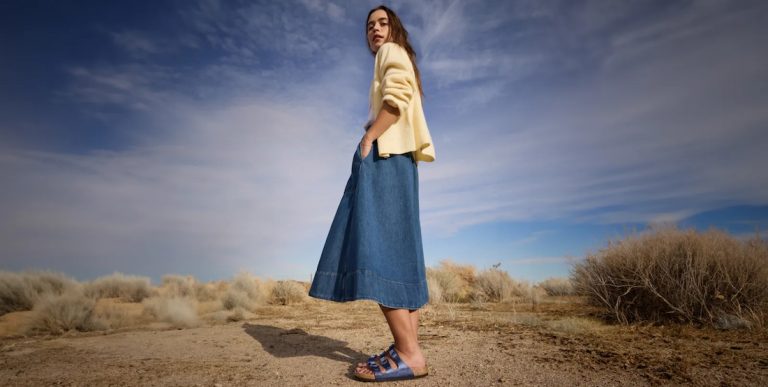
A German Sandal’s Journey Through American Counterculture, From Communes to Catwalks
New York, N.Y. — In 1966, Margot Fraser, a German émigré, introduced Birkenstocks to the U.S., importing them from a family-run company founded in 1774. These weren’t just shoes; they were orthopedic marvels, designed for foot health with contoured cork footbeds and natural leather.
Hippie Roots: The Sandal of Rebellion
For the hippie generation, they were a revelation. The sandals’ earthy materials—leather, cork, jute—aligned with the era’s back-to-nature ethos.
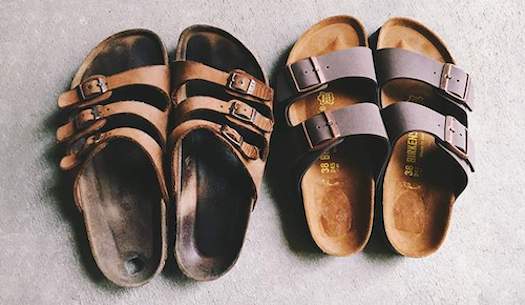
They screamed anti-establishment, a barefoot-adjacent rebuke to the polished loafers of the mainstream.
You’d spot them at Woodstock, on commune porches, or at anti-war protests, their wearers munching granola or debating free love.
Natural food stores, the precursors to today’s Whole Foods, became Birkenstock havens.
Mainstream fashion, however, scoffed. These “ugly shoes” were for freaks, not Fifth Avenue. Yet, their rejection by the establishment only fueled their allure.
For hippies, Birkenstocks were a badge of defiance, a step toward a simpler, more authentic life.
Granola Days: The Crunchy Liberal Uniform
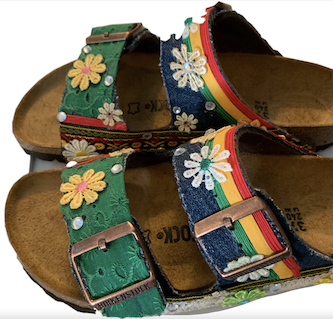
By the 1980s, the hippie spirit had mellowed into the “granola” era—a blend of environmentalism, health food fads, and New Age spirituality.
Birkenstocks transitioned seamlessly, becoming the footwear of choice for yoga teachers, co-op shoppers, and NPR listeners.
College towns like Berkeley and Boulder were Birkenstock strongholds, where professors paired them with corduroy blazers. The sandals symbolized “crunchy” liberal values: sustainability, simplicity, and a rejection of consumerism’s excesses.
The brand’s commitment to natural materials and durability resonated with a generation obsessed with organic produce and recycling.
Birkenstocks weren’t just shoes; they were a lifestyle statement.
From the communes of the ’60s to the organic aisles of the ’90s, they carried the torch of countercultural ideals, even as their wearers traded tie-dye for Patagonia fleece.
Gen X and the Normcore Revolution

Fast-forward to the 2000s, and Birkenstocks found a new tribe: Gen X and elder Millennials, who embraced the sandals’ “ugly” aesthetic as a badge of ironic cool.
The rise of normcore—a fashion trend celebrating the mundane—catapulted Birkenstocks into the spotlight.
Paired with socks, jeans, or even designer labels, they became a symbol of comfort, rebellion, and authenticity. Gen X’s ethos of rejecting polished perfection made Birkenstocks a perfect fit.
High fashion took notice. In 2013, Céline sent luxe Birkenstock-inspired sandals down the runway, sparking a frenzy.
Suddenly, the “ugly shoe” was chic.
Vogue declared them a must-have, and urban outfitters stocked them alongside skinny jeans.
For Gen X, wearing Birkenstocks was a wink at their countercultural roots while embracing a new kind of cool—one that didn’t take itself too seriously.
Global Cool: From Tech Bros to TikTok
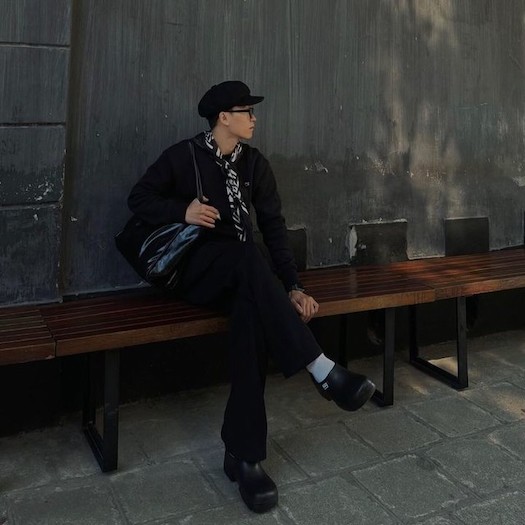
By the 2020s, Birkenstocks had gone global, embraced by everyone from tech bros in Silicon Valley to supermodels strutting in Milan.
Celebrity endorsements and collaborations with Valentino, Dior, Rick Owens, and Stüssy cemented their status.
TikTok teens flaunted them in outfit videos, while Birkenstock’s 2023 IPO signaled their full absorption into mainstream culture.
Prices soared—some pairs now cost $500—yet the brand stayed true to its sustainable, orthopedic roots.
Today’s Birkenstocks are a paradox: a functional sandal turned fashion icon. T
hey’re still crafted with cork and leather, still designed for foot health, but now they’re as likely to be paired with a Gucci bag as a hemp tote.
From Brooklyn to Bangkok, they’re ubiquitous, a testament to their ability to transcend cultural boundaries while retaining their core identity.
A Sandal’s Story, America’s Mirror
What does the Birkenstock saga tell us about America? Each generation—hippie, granola, Gen X, and now global cool—has projected its values onto these sandals.
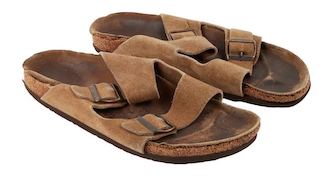
Photo credit: Julien’s Auctions
For hippies, they were a rejection of capitalism. For the granola crowd, they symbolized sustainability.
Gen X saw them as a middle finger to fashion’s pretensions, while today’s wearers embrace them as both trendy and timeless.
In a world of fast fashion, Birkenstocks remain defiantly slow. Their durability—many pairs last decades—stands in stark contrast to disposable sneakers.
They’ve evolved, with sleeker designs and high-end collabs, but their essence endures: comfort, authenticity, and a touch of rebellion. Like the generations who wear them, Birkenstocks have grown up without losing themselves.
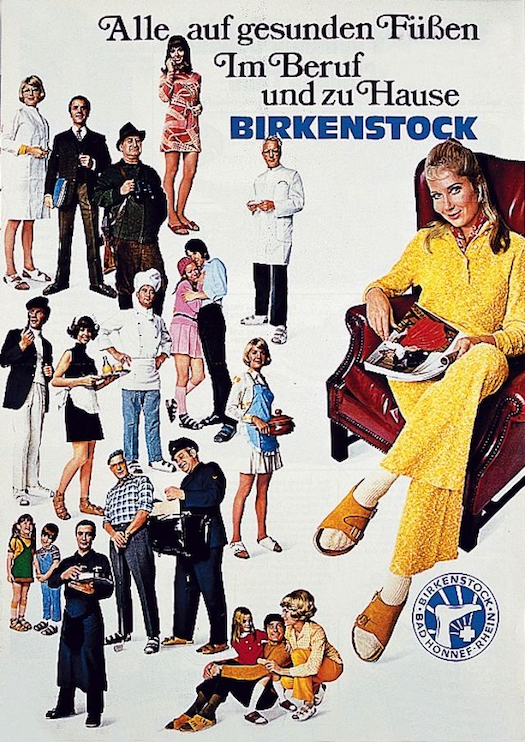
Summary for audio (75 words)
In New York, a 66th birthday gift of Birkenstocks sparked nostalgia. From their 1966 U.S. debut, these German sandals became hippie staples, then granola icons, Gen X normcore, and now global fashion. Each era—1960s communes, 1980s co-ops, 2000s irony, 2020s TikTok—projected its values onto them. Defiantly durable in a fast-fashion world, Birkenstocks mirror America’s evolving counterculture, blending comfort, rebellion, and authenticity from Woodstock to Wall Street.
_____________________________
GERMAN BIRKENSTOCK ADVERTISEMENT 1970S
“Alle auf gesunden Füßen Im Beruf and zu Hause” –
“Everyone on healthy feet – at work and at home”
_____________________________
COMFORTABLE IN THE SPOTLIGHT
SHIMMER & SHINE
#BirkenstockHistory #CountercultureFashion
#HippieStyle #Normcore #SustainableFashion
Tags: Birkenstocks, counterculture, hippie fashion,
normcore, sustainability, American culture
